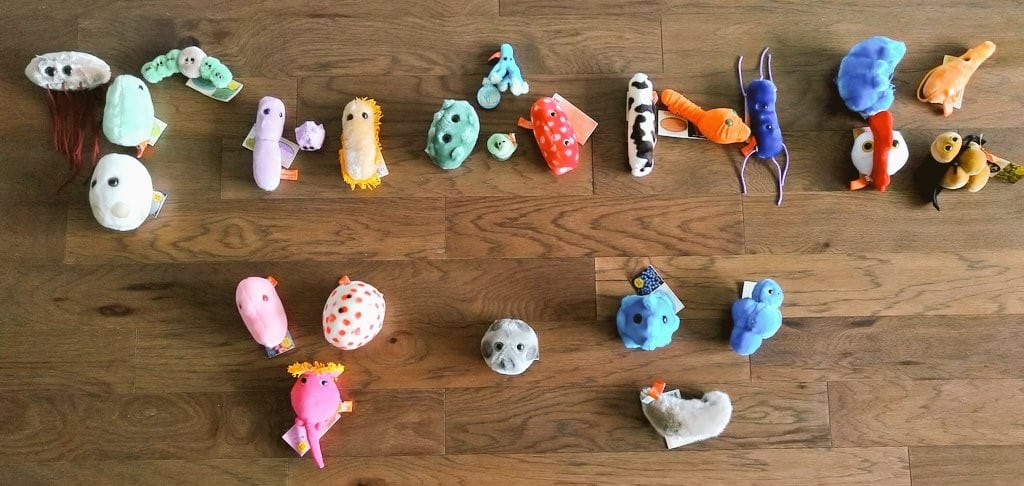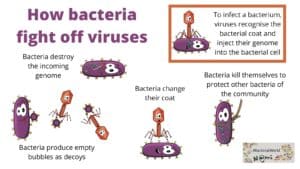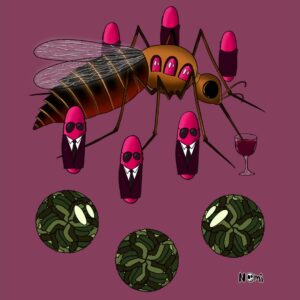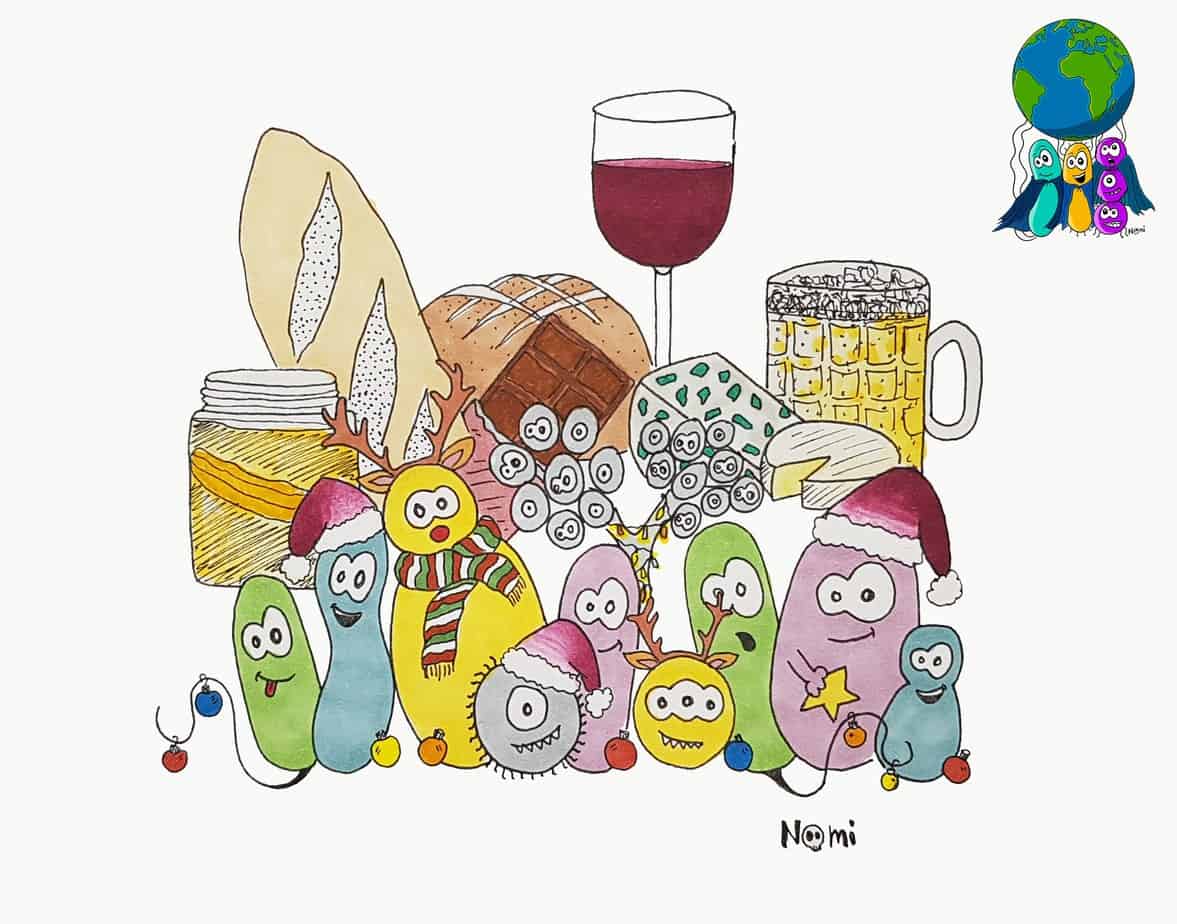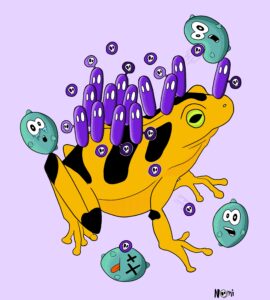The microbial world is incredibly colorful and diverse. And interesting microbes and bacteria are all around us.
We are completely surrounded by them and we surely would not be the same if it was not for our microbial friends.
Unfortunately, every once in a while, we read and hear negative news articles about certain players of the microbial world. And then we forget that many other microbes and bacteria are actually very helpful to us, our health, the environment and food production.
But the goal of the BacterialWorld blog is to remind you how colorful and interesting the microbial world is.
20 interesting microbes everyone should have heard about
The microbial world consists of many interesting players: bacteria, viruses, phages, fungi, protozoa, unicellular eukaryotes and microscopic animals. And together, they all make the microbial world such a diverse and fascinating environment.
So, here, we assembled a list of common and interesting microbes. Some of them you might find delightful, others you rather want to avoid and that is okay.
We want you to be aware that there are many more cool microbes and bacteria out there than what you hear in the news.
And that thanks so research, we know a lot about how to use these microbes or how to avoid them if they are dangerous.
For this list, I got help from microbe lover Rachel and her GIANTmicrobes which she introduced during the #MicrobesinMay challenge on Twitter.
Ready to learn about the microbial world and interesting bacteria and microbes?
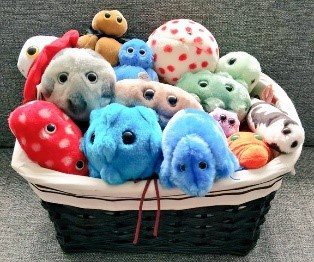
1. The bacterium Escherichia coli
Escherichia coli is rod-shaped and can have flagella all around its cell.
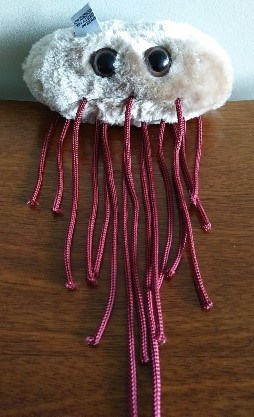
Most people have heard of Escherichia coli because of contaminated food or lakes. However, most strains are harmless and this bacterium is actually super important for your digestive health.
This is also why Escherichia coli is by far the most intensively studied and best-understood organism on the planet.
Escherichia coli serves as a model organism for microbiology and biotechnology. It is helping scientists to learn about everything DNA-related, as well as protein production and cell growth. In most research labs of biological or life sciences, scientists use this organism every day to produce proteins, produce gene fragments or use it as a vehicle for plasmids and vectors.
2. The Influenza virus
The influenza virus is an RNA orthomyxovirus that causes respiratory infections, which you may know as the ‘seasonal flu’. Luckily, there is a vaccine against the flu that you should get every year if you are able to.
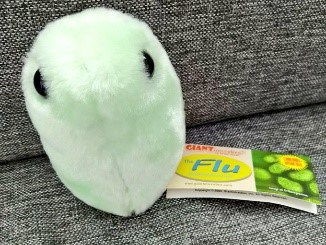
Influenza is an RNA virus that contains 8 genetic segments. Generally, RNA viruses are prone to mutate a lot; this happens during so-called antigenic drift and antigenic shift events. These “shifts and drifts” can change the structure of the virus’s surface proteins. Unfortunately, this change makes it harder for our immune system to recognize and respond to the virus.
Because the flu virus is ever-changing, you should help your immune system to recognize the new antigens. You can do this best by getting the new FluShot every season. But be aware that each virus is different and a FluShot will not protect you against other viruses.
3. The fungus Saccharomyces cerevisiae
You may encounter this fungus – almost on a daily basis. Saccharomyces cerevisiae is also known as the common yeast.
We use this yeast to make beer and bread. Like many other microorganisms, Saccharomyces cerevisiae performs microbial fermentation. This means it eats sugar and turns it into alcohol in beer and CO2 for bubbles in beer and bread.
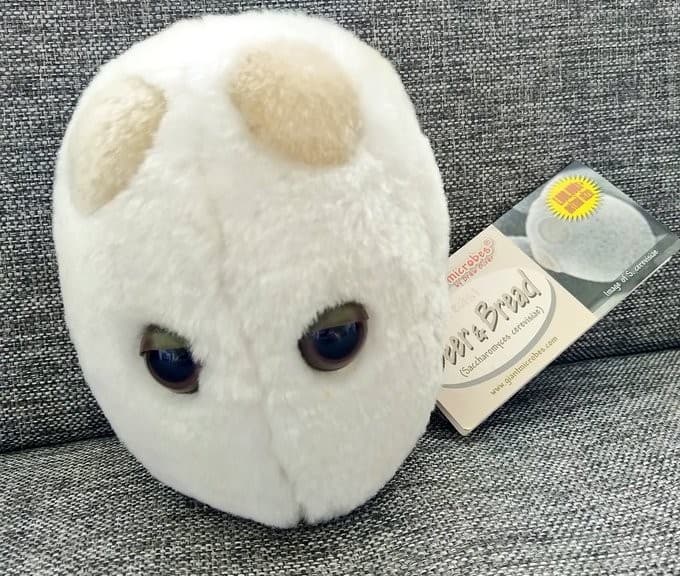
We cannot state enough that the yeast Saccharomyces cerevisiae is a fungus and not a bacterium. It produces rounded cells and researchers use it as a model organism for eukaryotes. This means its DNA is enclosed in a membrane and not swimming around freely as in bacteria. Humans are also eukaryotes, so lots of knowledge of human cellular and molecular biology comes from yeast research.
Saccharomyces cerevisiae also plays a role in biotechnology. Some strains produce biofuels while others produce recombinant proteins that we use as therapeutics.
4. The bacterium Lactobacillus acidophilus
Lactobacillus acidophilus gets its name because it produces lactic acids from sugars, which usually makes its surrounding very acidic.

Lactobacillus acidophilus cells are rod-shaped and usually grow in pairs or chains. This bacterium lives in our mouths and guts where it prevents the growth of other bacteria by maintaining a healthy microbiota.
This bacterium also helps make yogurt, since it breaks apart milk sugars to make acids and other healthy molecules. This is why Lactobacillus acidophilus is also a probiotic, meaning a microbe that promotes health. There are many claims out there promoting its use to increase health, but more research is needed.
5. The Rhinovirus
The Rhinovirus may look cute but it is one of those nasty viruses that you may not like. It causes the common cold and we all know how we feel not cute with a cold. There are more than 100 different varieties of rhinoviruses and together they cause almost half of all colds.
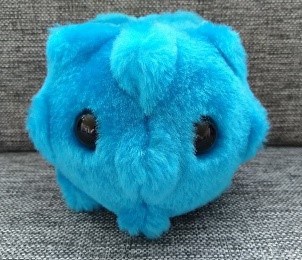
Rhinovirus is an RNA virus in a 20-sided capsid. They are some of the smallest viruses and can spread by aerosol or direct contact. The virus replicates best in temperatures slightly cooler than body temperature, like in the nose. In fact, “rhino” means nose in Greek.
Currently, there is no vaccine against Rhinovirus. And since it’s a virus, antibiotics won’t work against it.
The best way to protect yourself is good hand hygiene and physical distance from people with a cold.
6. The microscopic water bear
One of the most interesting and cutest microbes is definitely the water bear.
But what exactly are water bears?
Hypsibius dujardini are microscopic creatures, classified as the Tardigrada phylum.
As the name suggests water bears resemble bears and walk on eight tiny legs. Tardigrade means “slow walker”. So if you imagine a slow-walking bear through water, this is kind of what water bears are!
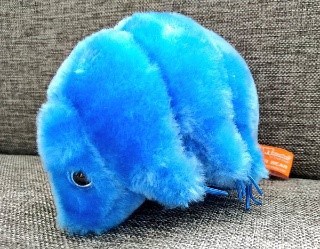
Besides being adorable, water bears can survive extreme conditions and they are found worldwide in diverse environments. Many species live in water or around moss. To survive in any habitat, water bears enter a state of cryptobiosis where it dries out and stops its metabolism. In this state, they can last several decades.
Water bears can live in hot springs, polar ice, mountains and deep in the ocean. In fact, researchers found that water bears can even survive the vacuum of space! That’s good since a capsule containing some crashed on the moon in 2019.
Learn more about what tardigrades look like under the microscope.
7. The microscopic rotifers
To us, Rotifers are certainly one of the most interesting and cutest microbes. These microscopic animals are almost all female and can reproduce without the involvement of males.
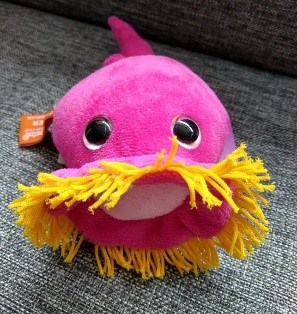
Rotifers are tiny free-living creatures found mostly in freshwater. Rotifers have a cylindrical body and a ring of cilia around their heads. When the cilia move, it appears as a wheel (rotifer means “wheel bearer”). This movement pushes food into the animal and helps them move through the water.
Rotifers are sexually dimorphic and the males are much smaller and usually do not live long.
Reproduction of this microbe is rather interesting: Unfertilized eggs grow as clones within their mother. But studies have found genetic differences without sexual reproduction. It is now just a question of how?
8. The bacterium Porphyromonas gingivalis
The bacterium Porphyromonas gingivalis causes bad breath and gum disease, so make sure to brush and floss regularly to keep it in check.
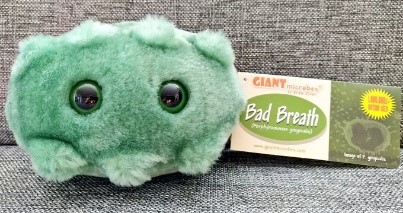
Porphyromonas gingivalis cells are rod-shaped and live in our mouths. They are anaerobic, so they don’t need oxygen to grow. This may seem odd since we should have oxygen in our mouths all the time. However, many different microbes grow in our mouths where they form biofilms. These are layers of almost no oxygen, in which the bacteria settle.
In the oral biofilm, the dental plaque, Porphyromonas gingivalis lives close to the gum line where oxygen is depleted. Here, the bacteria can infect the gum and cause erosion called periodontitis.
9. The Rubellavirus
The “little red” Rubellavirus is known to produce red rashes on children’s arms and faces. Luckily, there is a vaccine to prevent infection.
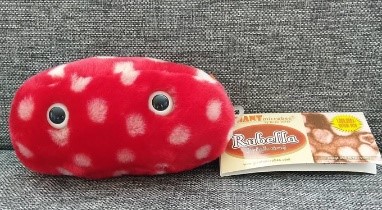
Rubella is an RNA virus in a 20-sided capsid wrapped by a lipid membrane. Also called German measles because it was first identified in Germany, rubella was once a common childhood disease causing rash, fever and sore throat. While it posed minor risks to children, rubella could be deadly for the unborn in the womb.
Today rubella is very rare because of the MMR vaccine, which protects against mumps, measles, and rubella. Thanks to scientific research and vaccination, many countries could be declared “free of endemic transmission of rubella”.
10. The morbillivirus
Separately, the virus that causes the measles. This virus leads to red spots all over the body and can be deadly. Fortunately, the MMR vaccine prevents infection.
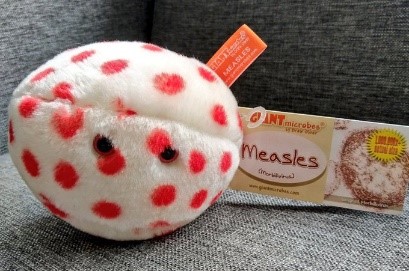
Morbillivirus is a spherical RNA virus. Measles is very contagious and spreads by personal contact and contaminated surfaces. It infects the respiratory system and causes rash, fever, cough, running nose and red eyes. Measles can cause serious complications and be deadly for kids.
Today, morbillivirus is still responsible for more than 100 000 deaths yearly, down from more than 2 million deaths annually. This is due to the introduction and widespread use of the MMR vaccine.
11. The bacterium Shigella dysenteriae
If you’ve ever experienced Shigella dysenteriae, you would remember! This bacterium infects the intestines and causes shigellosis, which is incredibly painful and uncomfortable. Antibiotics treat this disease, but hygiene is the best prevention.
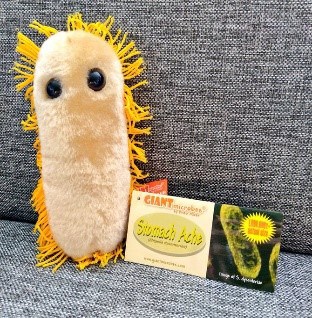
Shigella dysenteriae are rod-shaped bacteria. They have a biological needle with which they fire the so-called ‘Shiga toxin’ into our gut cells. This leads to stomach pain and watery diarrhea.
This bacterium travels through the fecal-oral route, from contaminated food or hands. It is very contagious because it needs only a few cells to make someone sick.
What’s the best way to protect yourself? Always cook food thoroughly to kill all bacteria. And wash your hands to prevent spread!
12. The human papillomavirus
This virus may look cute, but human papillomavirus has been linked to certain cancers! The human papillomavirus is a common virus that infects many. Thankfully, there is a new vaccine to prevent high-risk infections.
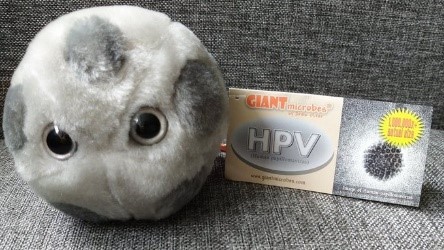
The human papillomavirus is a DNA virus surrounded by a circular capsid. This virus is very common and in most cases, one may not have any symptoms while the body clears the virus.
Sometimes, the virus causes small tumors called papillomas that appear as warts. If left untreated, those tumors can become cancerous.
The human papillomavirus spreads by direct contact and is one of the most common sexually transmitted diseases worldwide. A vaccine is available to prevent infection from the major cancer-associated human papillomavirus types.
13. The bacterium Anabaena
Anabaena, known as cyanobacteria, are photosynthetic bacteria, even though they resemble eukaryotic algae. These helpful bacteria contain pigments that give Anabaena the blue-green colour.
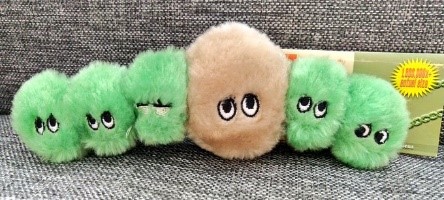
Commonly found in aquatic environments, cyanobacteria use their pigments to convert light into energy. Using that light along with CO2 and water, they convert it to sugar and oxygen. In fact, cyanobacteria are a major source of oxygen in our atmosphere today!
The bacteria are even more interesting since some of their cells have special superpowers. These so-called heterocysts can “fix” nitrogen.
Heterocysts have extra thick- cell walls to exclude oxygen that otherwise harms nitrogen-fixing enzymes. The heterocysts then share the fixed nitrogen with surrounding cells.
14. The bacterium Clostridium botulinum
Clostridium botulinum produces a neurotoxin known for causing botulism. But that same toxin is also a component of Botox. Just another way we use microbes for good.

Clostridium botulinum is a rod-shaped, spore-forming, anaerobic bacterium. Found in soils, it can enter the food supply as spores. Under correct conditions, like in canning, spores germinate and produce the toxin. Thus, food should be processed with high heat and pressure to kill spores.
The botulinum toxin is the most toxic substance known and causes paralysis. While botulism is serious and can be deadly, scientists found ways to use the muscle-paralyzing function of this toxin. In small doses, the toxin treats muscle disorders such as spasms. Also found in Botox, the toxin paralyzes muscles that lead to wrinkles.
15. The varicella-zoster virus
Remember those itchy spots caused by chickenpox? I do! But now many children don’t have to experience the results of the varicella-zoster virus because of the chickenpox vaccine (lucky them!).

The varicella-zoster virus is a highly contagious DNA herpesvirus. As a primary infection, the virus causes so-called varicella. You might remember this as body rash and itchy blisters that last a few days.
Yet, the varicella-zoster virus actually can remain dormant in our nervous system (called latency) and reactivate later in life. This secondary infection can then lead to herpes zoster, also called shingles.
While chickenpox is usually a non-serious childhood disease, shingles affect adults and can have serious complications and pain. That’s why there is a separate shingles vaccine, too. No one wants to be itchy or in pain, so make sure to get the vaccine!
16. The bacterium Borrelia burgdorferi
Borrelia burgdorferi is a spirochete bacterium shaped like a corkscrew with flagella at both ends. These bacteria live in ticks and can infect humans when bitten by an infected tick.
These bacteria cause Lyme disease, a zoonotic disease where the pathogen jumps from an animal to a human.
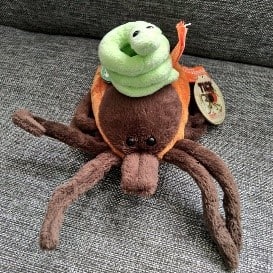
Lyme disease is best known for causing a bull’s eye rash. But it also causes fever, headaches and fatigue. Some cases of Lyme disease are asymptomatic and if left untreated can lead to serious neurological or heart issues. Make sure to protect yourself when going hiking and camping.
17. The bacterium Listeria monocytogenes
This bacterium has made headlines, but not for anything fun. Listeria monocytogenes has led to many food recalls because of contamination concerns. It can grow at 0°C, so even refrigerated food can be infected.

Listeria monocytogenes cells are rod-shaped and covered with flagella. This food-borne pathogen causes listeriosis that may result in sepsis, meningitis, or death. It’s especially dangerous for immunocompromised and unborn, which is why pregnant women shouldn’t eat soft cheese or uncooked meat.
Listeria monocytogenes is found in environments where food grows. Contamination can occur during food harvesting and processing. Once inside a human cell, they manipulate it so that the cell propels the bacteria into the next cell.
18. The Epstein-Barr virus
Did you know that the Epstein-Barr virus is one of the most common human viruses? It causes the commonly called kissing disease because we transfer the virus by saliva and bodily fluids.
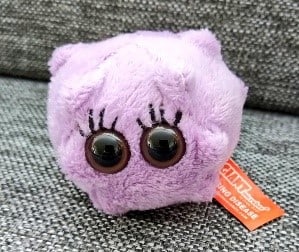
The Epstein-Barr virus is a DNA herpesvirus with a lipid envelope. Most infections occur in childhood and are asymptomatic or with only mild symptoms. Roughly 90% of adults have antibodies against Epstein-Barr, which means they were once infected with this virus.
When infecting adults for the first time, the Epstein-Barr virus can cause mononucleosis. Symptoms include fever, sore throat and extreme fatigue, lasting weeks to months. You can prevent the spread by not sharing utensils or drinking cups.
19. The bacterium Staphylococcus aureus
One of the best-known bacterial warriors is Staphylococcus aureus and its methicillin-resistant super brother MRSA. These two can infect almost all parts of the human body with their arsenal of virulence factors.
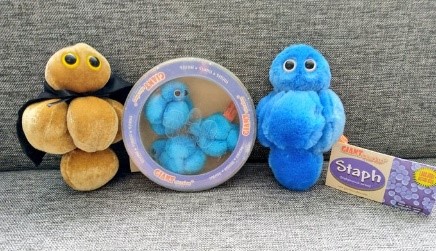
Staphylococcus aureus cells are round-shaped and form grape-like clusters. Most people have this Gram-positive bacterium in their nose or on their skin.
Unfortunately, with certain triggers, this harmless bacterium can become a pathogen. Then, Staphylococcus aureus produces virulence factors, such as toxins, enzymes, and antibody-inactivating proteins. These bacteria can also form biofilms on medical implants.
What about MRSA? Those are strains of Staphylococcus aureus that are resistant to the antibiotic methicillin (Methicillin-resistant Staphylococcus aureus). Antibiotic resistance occurs when bacteria acquire ways to inactive antibiotics and has become a worldwide health crisis.
20. The protozoan Toxoplasma gondii
Love cats? Well, those cats might have a ‘friend’: Toxoplasma gondii. This parasite can be carried by cats and is one of the most common parasites in the world. The infection causes toxoplasmosis which is an important zoonosis.
Toxoplasma gondii is an obligate intracellular parasite. It can reproduce sexually only in cats (called the definitive host) or asexually in any warm-blooded host (such as mice or humans). A cat can become infected by eating an infected mouse, then pass the infection to humans via litter.
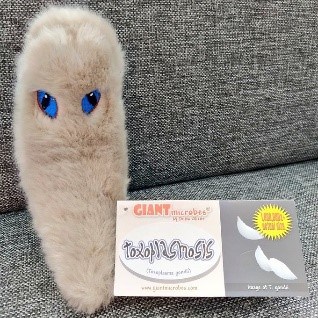
Toxoplasmosis infections can occur from eating contaminated food or from infected cat droppings. In most cases, the infection is asymptomatic. However, immunocompromised and pregnant people are at risk for complications.
Which one is your favorite among the interesting microbes?
We hope we could give you a broad overview of interesting microbes and bacteria common in the environment and on the human body. This list of common microbes is meant to raise awareness of how multifaceted the microbial world is.
Yes, some of these microbes cause diseases. But thanks to research, we now have ways to boost our immune systems to clear diseases caused by pathogens or to prevent microbial diseases in the first place with vaccines.
And don’t forget that so many microbes are actually super helpful and fun to look at! Just look at this cute water bear dancing around!
If you have questions about any of these microbes or want to learn more about any player in the microbial world, comment below or send us an email.
And if you want to know more about Rachel and interesting bacteria, follow her on Twitter, or connect with her on LinkedIn.
